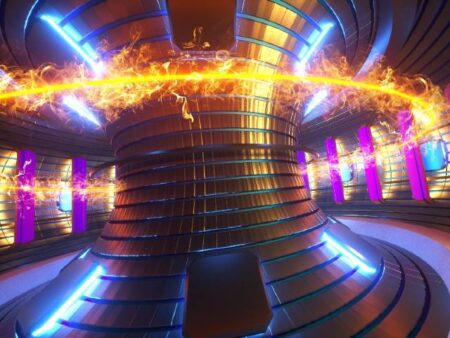
The US Department of Energy (DOE) announced $42 million for a programme that will establish multi-institutional and multi-disciplinary hubs to advance foundational inertial fusion energy (IFE) science and technology.
The hubs will be led by researchers at Colorado State University, the University of Rochester, and Lawrence Livermore National Laboratory, where last year a team successfully achieved fusion ignition for the first time, proving that creating energy from fusion is possible.
Projects funded by the programme—known as Inertial Fusion Energy Science and Technology Accelerated Research (IFE-STAR)—will bring together expertise and capabilities across DOE’s National Laboratories, academia, and the industry to advance IFE system components. Inertial confinement fusion is an approach to fusion that uses lasers or other technologies to compress and heat high-density plasmas.
IFE-STAR projects will aim to develop high-gain target designs; high-efficiency lasers at high repetition rates; and IFE-relevant fusion target manufacturing, tracking, and engagement.
Inertial confinement fusion has attracted greater interest and attention due to breakthroughs at Lawrence Livermore National Laboratory’s National Ignition Facility, where on December 5, 2022, researchers achieved scientific breakeven, meaning more energy was released from fusion than the laser energy used to drive it. The researchers have since repeated the result three times.
Proponents of fusion, the energy that powers the sun and stars, hope that it could one day also produce nearly limitless, carbon-free energy, helping accelerate the planet away from fossil fuels. Commercial nuclear fusion energy is expected to take decades to become economically viable. It will need to produce significantly more power and for longer period of time than was achieved in the laboratory setting.
Achieving net energy gain has been challenging because fusion happens at such high temperatures and pressures that it is incredibly difficult to control. Fusion works by pressing hydrogen atoms into each other with such force that they combine into helium, releasing enormous amounts of energy and heat. Unlike other nuclear reactions, fusion does not create radioactive waste, a potential benefit.
The IFE-STAR projects aim to continue progress by addressing priority research opportunities outlined in the IFE Basic Research Needs Workshop report as well as common scientific and technological gaps in the anticipated technology roadmaps of IFE fusion companies participating in the Office of Science’s Milestone-Based Fusion Development Program. Unlike magnetic confinement fusion, which aims to sustain a burning plasma for long durations, IFE will be repetitively pulsed. One of the goals is to develop the science and technology required to move inertial fusion from low-gain, single-shot experiments toward high-gain and high repetition rates as required for a potential IFE pilot plant.
The 2013 National Academies of Sciences, Engineering, and Medicine report An Assessment of the Prospects for Inertial Fusion Energy recommended establishing a broad-based IFE programme upon the achievement of laboratory fusion ignition. The Energy Act of 2020 and the CHIPS and Science Act of 2022 directed DOE to carry out an IFE research and technology development programme. Now that ignition has been achieved and following the direction in the legislation, DOE is establishing an IFE programme via IFE-STAR.
The members of the three hubs are:
Inertial Fusion Energy-Consortium on Laser-Plasma Interaction Research hub
University of Rochester (leader)
Ergodic LLC
University of California, Los Angeles
University of Nebraska–Lincoln
Xcimer Energy Corp.
Inertial Fusion Science and Technology hub
Colorado State University (leader)
Cornell University
General Atomics
Los Alamos National Laboratory
Marvel Fusion
SLAC National Accelerator Laboratory
Texas A&M University
U.S. Naval Research Laboratory
University of Illinois Urbana-Champaign
Xcimer Energy Corp.
National Science and Technology Accelerated Research for Fusion Innovation & Reactor Engineering hub
Lawrence Livermore National Laboratory (leader)
Focused Energy
Fraunhofer ILT
General Atomics
Leonardo Electronics US Inc.
Livermore Lab Foundation
Longview Fusion Energy
Massachusetts Institute of Technology
Oak Ridge National Laboratory
Savannah River National Laboratory
SLAC National Accelerator Laboratory
Texas A&M University
TRUMPF
University of California, Berkeley
University of California, Los Angeles
University of California, San Diego
University of Oklahoma
University of Rochester
Xcimer Energy Corp.
The projects were selected by peer review under the DOE Funding Opportunity Announcement for Inertial Fusion Energy Science and Technology Accelerated Research. Projects will last up to four years with total funding of $42 million, including $9 million in fiscal year 2023 and $33 million in outyear funding contingent on congressional appropriations.